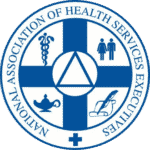Out of all the industries affected by COVID-19, healthcare probably felt the biggest impact. Not only did the pandemic cause an influx of patients in our nation’s care facilities causing our teams an increasing level of burnout, new protocols impacted how we recruit talent. Hospital bottom line income margins declined in direct correlation to the decline in elective surgeries. All of this at a time when we’re facing serious shortages of primary and specialty care providers. How has this affected the salaries of the teams we hire? What compensation trends will affect our recruiting efforts this year?
2021 Healthcare Compensation Trends
The first trend that healthcare recruiters should pay attention to is the sheer lack of numbers available to place in positions. The Association of American Medical Colleges (AAMC) predicts we will need 124,000 more physicians than are available by 2025. We know the average age of nurses is increasing, which puts us in a vulnerable position as these nurses begin to retire.
Having a competitive compensation package is both a goal and a necessity in today’s challenging healthcare talent markets. Organizations rely heavily on salary along with signing bonuses to attract top talent. The first trend to take note of is that these bonuses are rapidly increasing. A recent poll of UHC Recruiters found the average signing bonuses on several top specialties to be around:
- Internal medicine $20,000
- Family practice $25,000
- Psychiatry $30,000
- Ob-gyn $24,000
Base salaries are also increasing. This recent poll of UHC Recruiters reveals the average salary for these medical specialties’ is about:
- Internal medicine $215,000
- Family practice $210,000
- Nurse practitioner $110,000
- Psychiatry $300,000
- Ob-gyn $275,000 with Delivery & $234,000 without Delivery
We’re also seeing physician assistants doing well in this economy. If they’re working in the ER they average salaries of $123,000 yearly. Conversely, in family medicine, PAs make just over $100,000 on average.
Another compensation trend has to do with the new skills we’re searching for across specialties. Candidates who understand digital technologies and specifically have “webside manner” related to telemedicine generally are more popular with healthcare recruiting teams. We’re also seeing an increasing need for travel nurses, particularly to help alleviate some of the burnout our nursing and frontline teams are feeling now that the COVID crisis has reduced in scope. Of course, this increasing demand comes at a time when the U.S. Bureau of Labor Statistics projects RN job growth at 7% annually, which is much higher than almost any other profession.
At the same time, turnover is at an all-time high in healthcare. Employers are scrambling to improve employee satisfaction and cut these numbers, but the numbers tell they’re not being very effective. Since 2014, the average hospital has turned over 87.8% of its entire workforce. That means the turnover in hospitals is second only to the turnover found in the hospitality field. Or, to put it another way, the healthcare profession has the second-highest turnover rate in the entire country.
The problem is burnout, which has created a revolving door for healthcare professionals at all levels of the typical organization. For community health centers, recruitment and retention have become increasingly critical. The loss of even one provider at a community healthcare facility can affect the entire community. When there is a shortage of providers, it forces people in rural communities to travel for miles to seek out medical treatment. In many cases, rural community facilities are the only healthcare provider for miles.
All of these trends should be at the forefront of your recruiting efforts. We know we’re living in interesting times; that’s why organizations turn to UHC Solutions for help. We have extensive candidate networks and work strictly within the community healthcare market. We can help you overcome these hiring challenges and help you meet your goals. Contact us today to get started.





